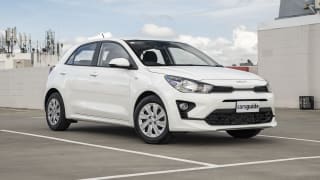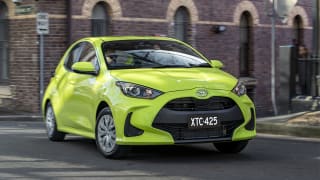An asking price of $23,690 locates the Pure SP on the second rung of the Mazda2 ladder, above the Pure and below the Evolve and top-spec GT.
It also puts it a cut above the sub-$20K entry-level crop of light hatches and micro SUVs, so you should expect the standard features list to be well beyond bare bones.
And it is, but sadly, the Mazda2 is showing its age, in this case relative to the Pure SP’s competitors like the recently upgraded VW Polo Life ($25,250), and Toyota Yaris Ascent Sport ($23,740). First impressions are more about what’s not in the car, rather than what is.

To quote my initial road test notes, ‘No auto headlights, no digital speedo, no front centre armrest, no rear centre armrest, no boot tie-downs.’
The 7.0-inch multimedia screen is tiny by current standards, and the plastics around the dashboard are as hard as Dwight 'The Rock' Johnson’s abs.
Manual air-con (rather than climate control) is to be expected at this price-point, and things begin to pick up once you dig a bit further.

The headlights are LED, cruise control is included, as are 16-inch alloy rims, a leather-trimmed steering wheel, gearshift and hand brake lever, six-speaker audio (with digital radio), Apple CarPlay and Android Auto connectivity, a reversing camera, as well as keyless entry and start.
If you’re shopping around the city car category you’ll notice the age-related shortcomings, but overall the Mazda2 Pure SP’s standard equipment list meets the price brief.























